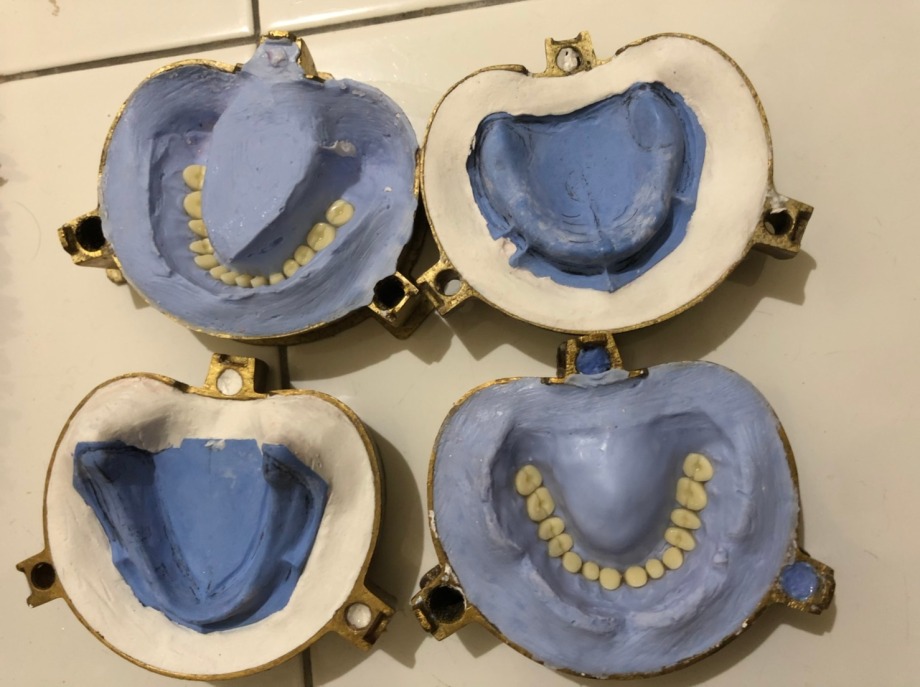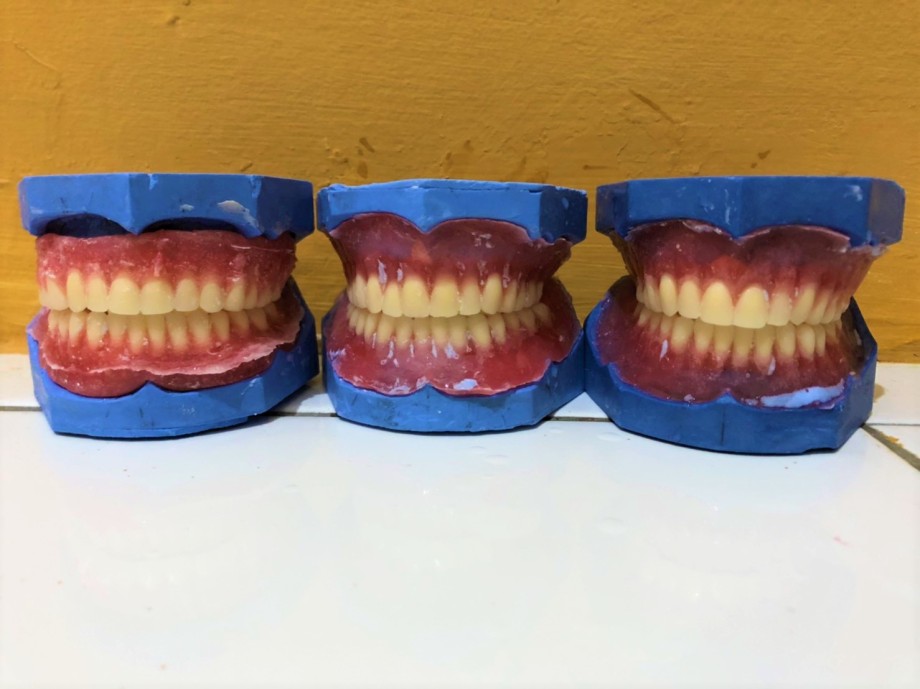6th Semester Skill Lab
Complete dentures can be either “conventional” or “immediate.” Made after the teeth have been removed and the gum tissue has begun to heal, a conventional denture is ready for placement in the mouth about eight to 12 weeks after the teeth have been removed
after boiling out

before polishing

if you look closely to my CD (the left one) you can see how the angle is just not right.. that’s because of my bite rim happened to look like a “horseshoe” rather than a letter “U”. SO make sure you make the right bite rim! because that’ll affect the other steps..
after polishing
I know.. I know.. it should cover up to the vestibulum, but.. it just happened okay.. and I don’t have time to fix it. It happened because of the undercut from the plaster when I did the flasking process. SO my advice is… make sure you don’t have any undercut when you flask!






























































































